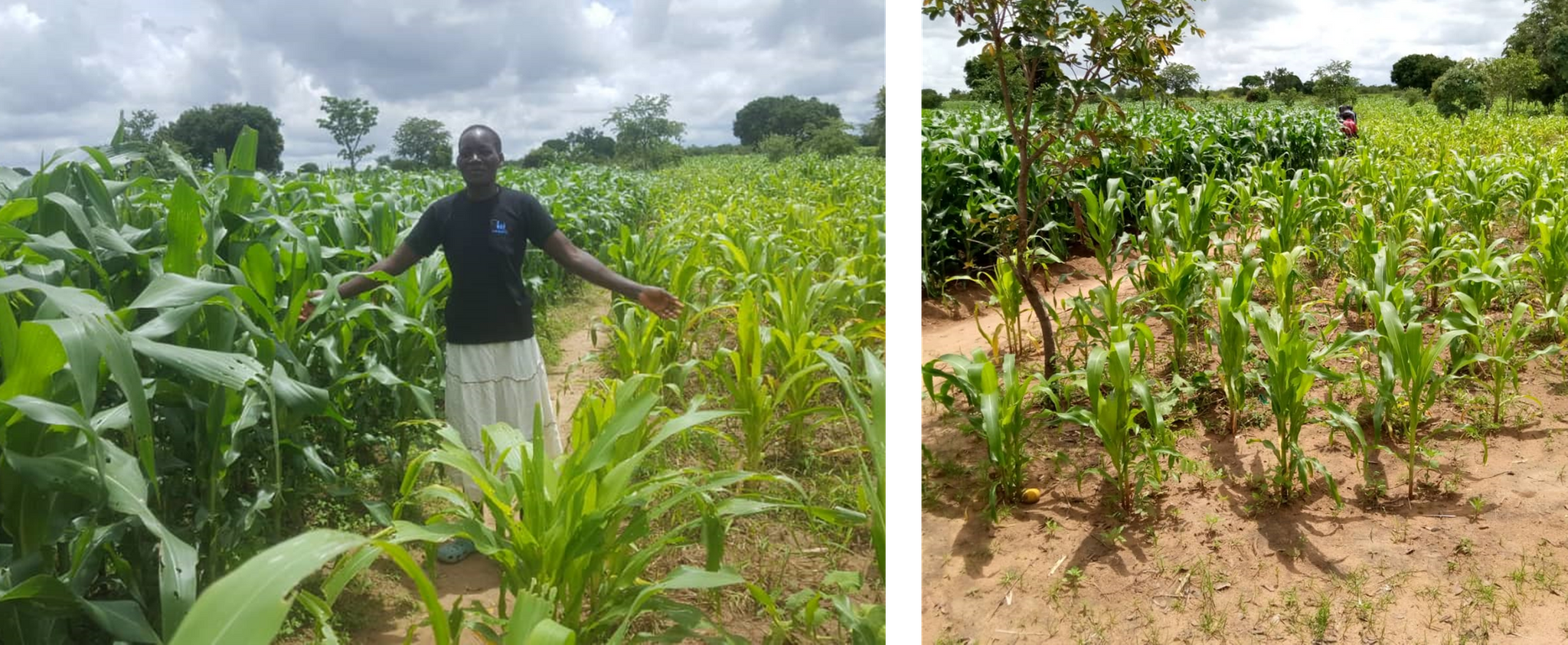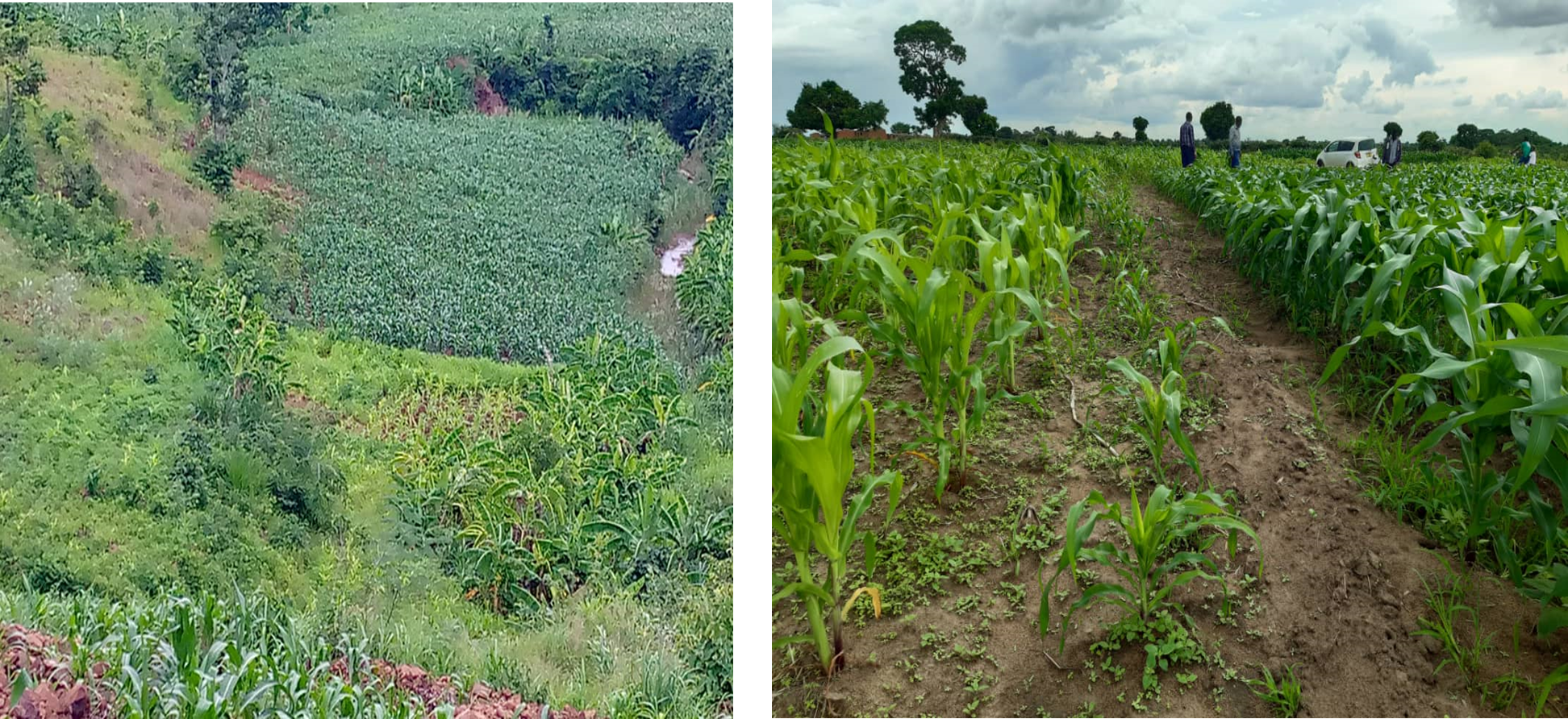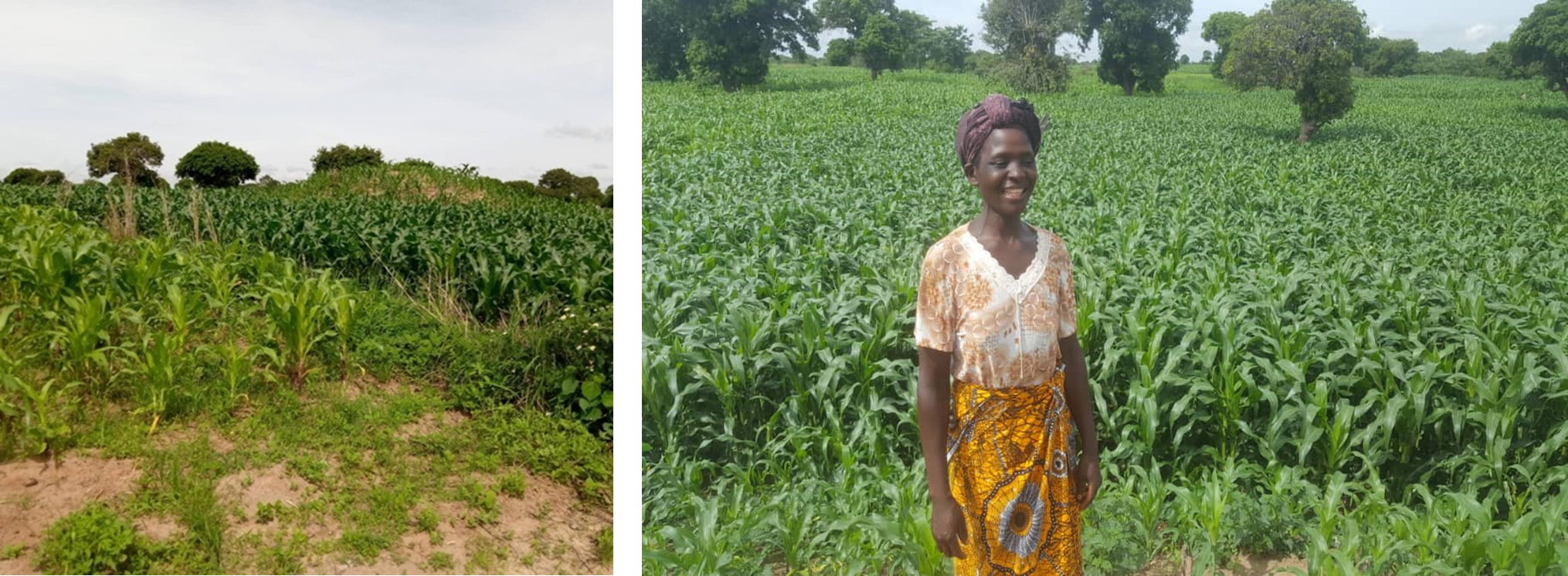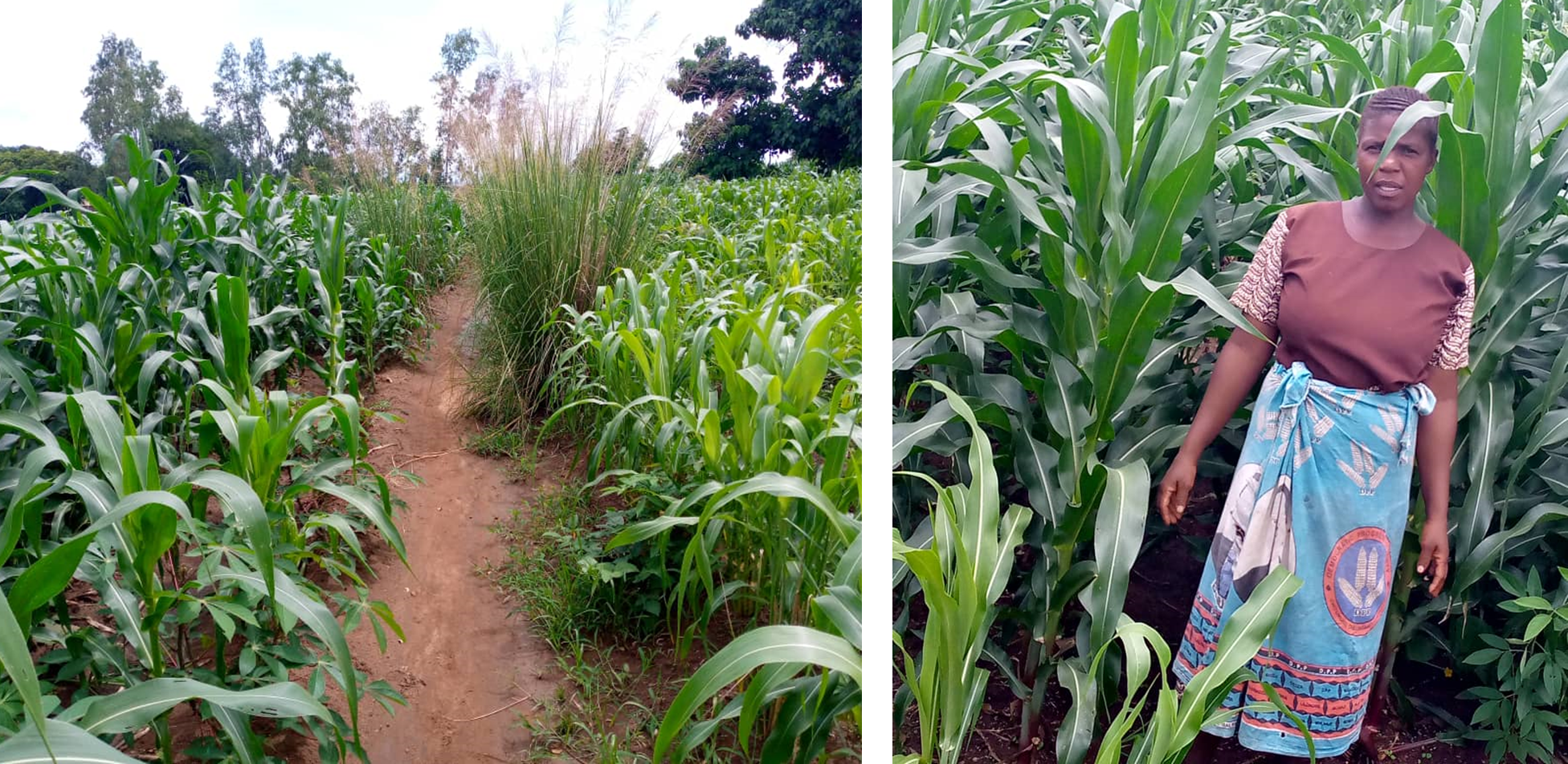The latest crops are growing nicely, and the Tiyeni crops outperform again
23 January 2021
More and more Malawian farmers are adopting Tiyeni’s “common sense” Deep Bed Farming (DBF) method, which uses a low-technology approach to deliver consistently higher yields than traditional methods – on average, doubling yields from one harvest to the next. From an initial 38 farmers in 2013, now nearly 20,000 farmers are using our methods -- and the numbers are rising steadily. (Please click here to find out more about Deep Bed Farming.)
Deep Bed Farming spreads by word of mouth, as people compare their own crops with what they see their neighbours doing. Farmers tend to be conservative – starting with only a small portion of their land under new methods until they are satisfied they work, then expanding incrementally. So we often see Tiyeni-grown crops and traditional crops side by side, farmed by the same family, grown at identical times in an identical climate in identical soils – yet with highly visible differences between them. When they see the benefits – which can be especially visible in areas that have had potentially damaging dry spells – they adopt or expand our methods. And so Deep Bed Farming spreads.
Our all-Malawian team has in the past few days sent new photos and videos, including several new ‘comparison’ photos, which we’ll show here.
The first photo shows Jane Makamo from Kalua village in Manyamula EPA (Extension Planning Area), in Mzimba District, in central-northern Malawi, while the image on the right is from her neighbour’s field.

In each picture the Tiyeni crops are visibly darker, thicker and taller than the traditionally-grown crops. The date of planting, seeds, soils and weather conditions are identical: only the method is different. Also in Manyamula, Kingsley Ngwira (not pictured here) told us that other farmers – who had been mocking him for putting so much effort into preparing his first DBF crop – now want to adopt it too! (See more testimonials here.)
The key to Deep Bed Farming is, first, to use a pickaxe to break up the compacted underground soil layer, to let water air and nutrients percolate more easily; second, to create the specially designed Deep Beds to maximise water retention, minimise or eliminate runoff and erosion, and prevent recompaction; and third, to use conservation agriculture techniques such as composting, mulching, cover crops and crop rotation to build living healthy soils.
Next is a field from Chinyama village in Msikawanjala in Mulanje district in southern Malawi. The one on the right is also from Manyamula.

Again, the traditional crops are sparser, shorter, and lighter green.
Next, on the left, is Patricia Theu’s field from Tchemba also in Manyamula, with traditionally-grown maize in the foreground, and Tiyeni-farmed maize behind it. And the photo on the right shows a happy Patricia with her new crop.

The following photo, on the left, compares two fields belonging to Mr. Matheya, the Secretary for Tchodola group in Mulanje. Again, identical conditions, different methods, different results. The photo on the right shows the Chairlady of the Tchodola group, standing in her vibrant Tiyeni maize field.

Elsewhere, Alastair Scarborough of the Nchima Trust, which recently began trialling Deep Bed Farming after making contact with Tiyeni, sent us this note:
"This season, we have engaged over 200 farmers new to Tiyeni and it looks like it is coming along nicely. There was a gap in the rains early on but it seems that whatever the weather the Tiyeni farmer will always do better than the non-Tiyeni farmer."
Scarborough sent us this video, where the commentator notes a DBF field on one side of the road, outperforming a traditionally-grown crop on the other side.
The commentator adds:
“[This] is along the main road going to school. People pass this road, and always they are asking, ‘what has happened to this field?’ We had dry spells for three weeks, but here the maize did not wither. People were very happy and wondered what is happening on this one. The maize on the other side is withering, on the ridges. . . . this is very wonderful.”
This is what we mean about how the method spreads, by word of mouth. Finally, as if further evidence were needed, is this video, also from Tchemba section in Manyamula.
The lead farmer shows her “80 to 90 bags” Tiyeni crop next to the old crop, “35 to 40 bags.” As so many other farmers have found, Tiyeni typically doubles yields, or more, from one harvest to the next, and from one field to the next.
In short, the Tiyeni method is going from strength to strength. The farmers are delighted – and so are we. By trapping water and carbon more effectively in the soils than traditional methods, DBF helps farmers not only to adapt to the effects of climate change – but also to mitigating climate change itself.
For more on how and why Deep Bed Farming works, please click here. For information and statistics and research, please click here. If you would like to donate to Tiyeni, please contact us or click here.